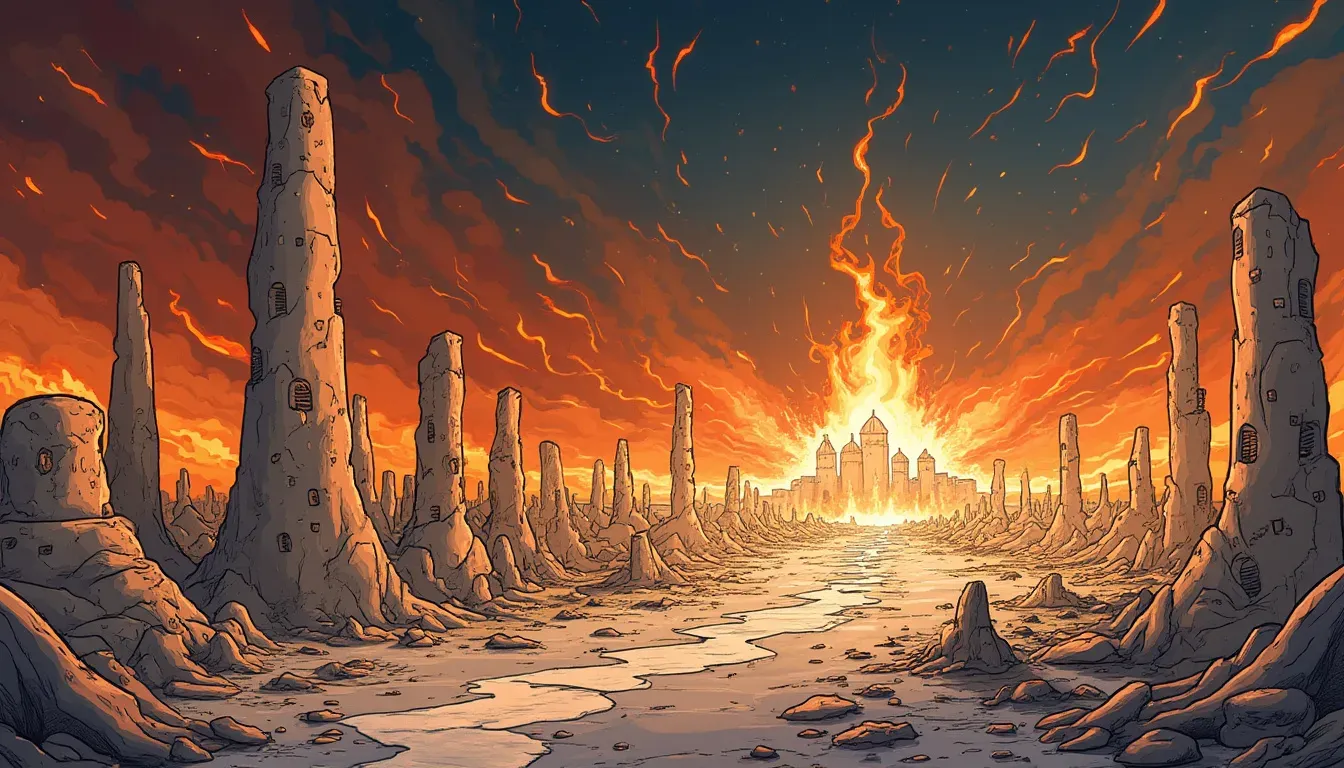The Origins of Biblical Narratives
"The reasonable man adapts himself to the world; the unreasonable one persists in trying to adapt the world to himself. Therefore, all progress depends on the unreasonable man." — *George Bernard Shaw*
The stories of the Bible stand as some of the most profound narratives in human history, weaving tales of morality, faith, and the quintessential battle between good and evil. These narratives have significantly shaped the cultural and spiritual lives of billions across millennia. But how did these culturally significant stories originate, and could there be a historical basis behind these monumental tales?
In this exploration, we dive into these ancient stories through the lens of modern technology and archaeology, offering a fresh perspective on their possible roots. This journey begins in the heart of the Middle East, a region often referred to as the Holy Lands.
The Tale of Sodom and Gomorrah
The narrative of Sodom and Gomorrah is one of the most terrifying stories in the Bible. It speaks of two cities allegedly obliterated by divine wrath. Abraham's nephew, Lot, settles in the fertile plains near Sodom, unaware of the impending destruction that would make history as a divine act of retribution. Fire and brimstone descend from the heavens, incinerating everything.
But was this merely a cautionary tale of morality, or was it grounded in historical events? Our quest to understand these cities leads us to the Dead Sea, where ancient texts assert the cities once stood.
Unearthing Clues of Catastrophe
The word "Siddham," in Hebrew meaning "salt lake," steers scholars to the plains surrounding the Dead Sea as the likely location of Sodom and Gomorrah. Here, geologists have identified significant fault lines — a massive rift signaling an earthquake-prone zone. These geological features suggest that these cities were constructed on precarious grounds, ripe for disaster.
In this quest, the enigmatic figure of Lot's Wife, turned into a pillar of salt, may serve as a metaphor for geological phenomena. Visiting Mount Sodom, a massive salt mountain, presents geological substances like gas and sulfur trapped beneath the salt — elements that, when released during seismic activity, can combust violently.
Discovering Signs of Destruction
An archaeological site believed to be Tell Al Hammam has yielded insight into the possible truth behind this story. Excavations reveal a once-flourishing city reduced to ruins around 1700 BC, providing a picture of destruction far beyond a mere fire. The finding of molten mud bricks hints at catastrophic heat levels, with theories of a meteorite impact suggested as one plausible explanation.
The Journey of Exodus
Arguably, one of the most epic tales of the Bible is the Exodus — the departure of the Israelites from Egypt, marked by the miraculous parting of the Red Sea. The historicity of Moses leading his people to freedom raises questions; how could such an extraordinary event unfold?
Exploring the potential routes reveals the concept of the "Reed Sea", possibly misinterpreted as the Red Sea in translations. Historical detective work suggests Lake Manzala could be the true "Reed Sea" — a place where wind-driven evaporation could allow for phenomena akin to the story's descriptions.
The Pharaoh's Pursuit
The exodus tale positions the conflict during Ramses II's reign, yet archaeological evidence of the Israelites within Egyptian records is scant. There is speculation around the Shasu, a group possibly connected to the Israelites, with inscriptions bearing their name found near Luxor.
Interpreting Natural Wonders
Delving into the ancient landscape via technological tools reveals past geographical configurations supporting the existence of a reed-dense water body. Such natural settings may have played host to meteorological conditions leading to receding waters, allowing the Israelites passage.
Furthermore, studies into the Santorini volcanic eruption propose its resulting mega-tsunamis could match the devastation described in the drowning of Pharaoh's army. Therefore, these natural phenomena could combine in collective memories, forming the legendary account.
Conclusion: Bridging Faith and Science
This exploration reveals that while these biblical stories serve primarily as religious and moral parables, they may also encapsulate the ancient world's natural events. The persistence of these tales through time speaks to their power and the compelling interplay between faith and observed reality. Our quest emphasizes that history and science together can offer intricate insights into these age-old scriptures.
BIBLICAL STORIES, GEOLOGY, ARCHAEOLOGY, EXODUS, YOUTUBE, SODOM AND GOMORRAH, CATASTROPHE, MIDDLE EAST, SCIENCE AND RELIGION, ANCIENT HISTORY, BIBLE

